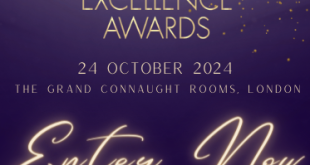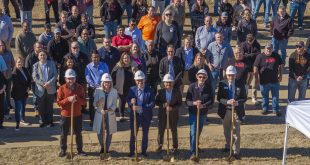Temperature sensors are used in applications ranging from mobile phones to food refrigeration. But where quality measurements are critical, their calibration is essential, writes David Southworth, sales & marketing manager at Isothermal Technology, a company with 30 years of experience in temperature calibration.
The requirement to measure temperature is enormous. Pause to think of the devices around us. In many cases there is an obvious need to measure temperature – from the central heating control to the refrigerator, the kitchen oven to the heating system in the car. Perhaps you have a thermometer in a greenhouse or a desktop weather station? And mobile phones and laptops all have temperature sensors. Are you sitting on a chair? Well the materials from the plastic cover to the steel legs are processed at particular temperatures to ensure the quality and to avoid wasting energy. Sipping a cup of coffee? The milk in it will have been pasteurised at a particular temperature. In fact, temperature sensors surround us in our daily lives.
In many areas the temperature is not critical. If, for example, the display in the car reports 19°C but in reality the temperature is 21°C, life goes on. No great trust is required and the error may never be noticed. But in other areas, good quality measurements may be critical. Consider, for example, the cost and long term business damage if a supplier of refrigerated food discovered the goods had not been transported within agreed limits.
In power generation, being able to make accurate measurements can save energy, and energy savings brought about by even a small improvement in measurement might save hundreds of thousands of pounds a year. In a medical setting, be it a thermometer being used for diagnosis or a sensor controlling an MRI scanner, poor measurements could have disastrous consequences. So, whilst some sensors may never be calibrated, others may need calibration to ensure quality, make cost savings from increased efficiency, or even to safeguard human life.
How to calibrate
A complete measuring system will compromise both a sensor and a measuring instrument. Instruments can be calibrated by disconnecting the sensor and connecting a temperature simulator – for example, a thermocouple can be replaced with a voltage source that injects voltages equivalent to the thermocouple signal over a range of temperatures.
The problem with this approach is that it only checks the instrument, not the sensor. In many cases sensors undergo wide changes in operating temperature and can be used in hostile conditions. As a result the sensor can drift significantly, and potentially more than the measuring device, which may benefit from both modern electronic technology and being located away from extremes of temperature.
To calibrate the whole measuring loop a portable heat source can be used in situ. Now, the sensor can be placed into a heat source and temperature cycled so that the whole loop, sensor and instrument can be verified.
Portable and transportable heat sources are now available to cover the range from -100°C to 1300°C. Isothermal Technology (Isotech) can, for example, provide small handheld sources through to large devices capable of accommodating large sensors.
Types of heat sources
For on-site calibration Dry Block calibrators are usually the most convenient. Here, a metal block is heated or cooled to the required temperature and the sensor or sensors to be tested are placed into the block. There are also multi-function calibrators that can be used both as a Dry Block and also Stirred Liquid Baths. With this type of device the thermometers are placed into a suitable liquid, usually silicon oil, rather than a drilled metal block.
Some Dry Blocks are used in a way that the sensor being tested is compared to the displayed temperature value. For greater confidence in measurements a separate higher accuracy thermometer is placed into the heat source to which the sensor is compared against.
Not all sensors can be calibrated on site. Some will need to be sent to a laboratory with equipment offering a larger volume, wider temperature range, or greater accuracy.
 Calibration frequency
Calibration frequency
Calibration brings increased confidence in the measurements being made, and the frequency of calibration needs to be determined to suit the application.
Let us consider a sensor being used with an instrument to verify that a specialist adhesive is stored below -80°C, and failure to observe this impacts the bond strength of the adhesive. Suppose the sensor is checked annually, and all is well for some years. Then, at an annual recalibration, it is noticed the sensor has shifted by a large amount. At what point did the shift occur? The day after the previous check, half way through the year, the day before?
Of course there is no answer, in the same way there is no answer to how much adhesive may be impaired, or how many products to recall. Calibrating more frequently, as well as using multiple sensors, would increase confidence and reduce the risk of a nightmare scenario.
How can calibration be trusted?
Isotech heat sources and instruments can be provided with UKAS calibration certificates from its accredited laboratory. Accreditation is a ‘is a formal, third party recognition of competence to perform specific tasks’.
 Instrumentation Monthly Test | Measurement | Control
Instrumentation Monthly Test | Measurement | Control





